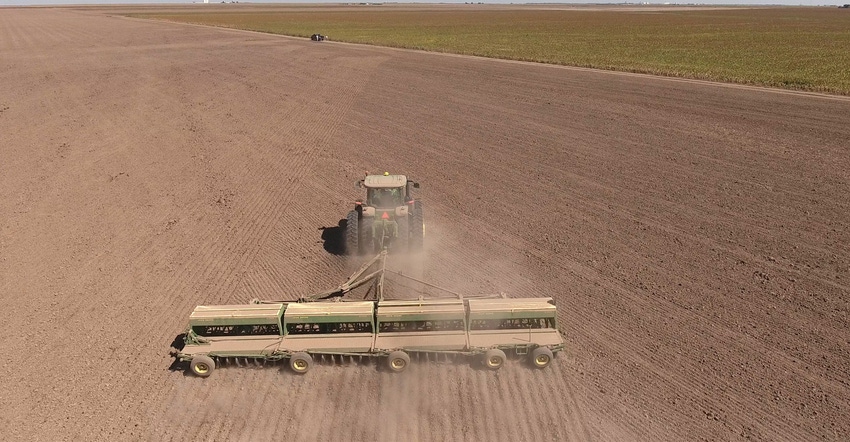October 19, 2022

Despite continued drought and delays in fieldwork and fertilizer delivery, Kansas producers are no strangers to dusting in the next year’s wheat crop — planting behind failed fall crops, capitalizing on the smallest increments of rainfall and keeping their faith in the seeds going into the ground.
“There’s lots to worry about, and I haven’t figured out how I can affect any of it,” says Mike McClellan, who farms near Palco in Rooks County.
McClellan is just starting to plant wheat in mid-October. Everything seems to be behind this fall — a welcome little bit of rain last week greened the soybeans back up, delaying harvest and the drought’s impact on the Mississippi River, making it hard to obtain needed fertilizer. He is trying to prepurchase fertilizer and diesel, but admits the totality of the drought, delays and increased input costs make him nervous.
Tough outlook
USDA’s recent summary of the 2022 wheat crop was also not encouraging. In the Small Grains 2022 Summary released on Sept. 30, USDA slashed Kansas wheat production to 244.2 million bushels, compared with 364 million bushels last year. As a result of the persistent drought, USDA reported 700,000 acres were planted to wheat but not harvested, and yields plummeted to an average of 37 bushels per acre, well below 52 bushels per acre in 2021 and 45 bushels per acre in 2020.
And McClellan isn’t the only one feeling the effects of a delayed fieldwork at the start of this year’s growing season. For the week ending Oct. 9, the USDA National Agricultural Statistics Service reported half of the Kansas wheat crop has been planted, slightly behind the five-year average of 54%. Emergence, however, remains well behind at 19%, compared to 29% last year and 31% for the five-year average.
Little bit of hope
Brian Linin is one whose wheat has started to come up near Goodland, and he’s excited that he might get a good stand. After initially completing planting on his summer fallow ground last week, his crew noticed a field of not-so-great corn was a little wet following a rain a week ago, so he hopped back in the tractor and planted it to wheat.
��“This may be our best field, because we actually got moisture,” he says, noting that the extra field means his own acreage is now up for the year.
A lot of wheat is going into the ground in his area, thanks to higher prices and continued dry conditions that make wheat a more appealing planting option. While Linin is positive right now, he recognizes the drought is far from busted. For the last two years, his area has had a cumulative moisture deficit of 12 inches — which will make it hard on this year’s wheat crop, even with a good start.
Drought concerns
The most recent NASS crop progress report also detailed the driving drought concerns. Topsoil moisture was rated at 81%, very short to short. Even more concerning, subsoil moisture was rated at 86%, very short to short.
Ron Suppes, who farms near Dighton, is particularly concerned about subsoil moisture. He just finished up wheat planting and estimated three-fourths of his crop will emerge, thanks to the dribbles of rain he received recently, but the remaining fourth will likely not come up. He questioned whether stands will have enough moisture underground to make it to the cooler temperatures that signal dormancy and sustain the crop through winter.
Only time will tell what Mother Nature has in store for this year’s growing season, but Kansas farmers continue to do what they do best — dust in the crop, pray for rain and hold out hope that next year’s harvest is better than the last.
Debes is a freelance writer for Kansas Wheat.
Source: Kansas Wheat
You May Also Like




